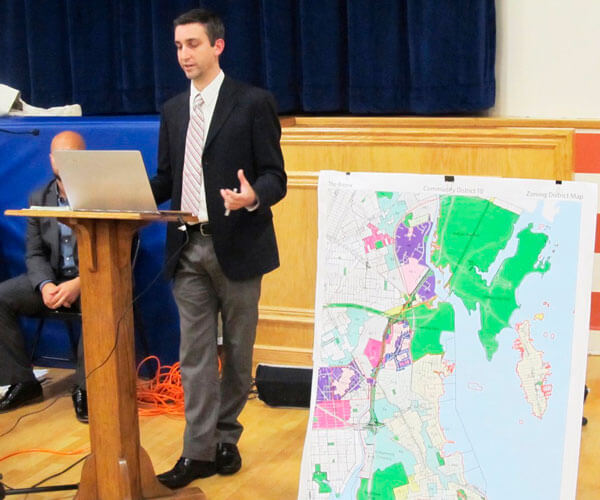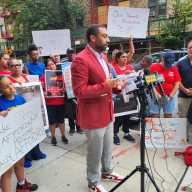The borough president amplified his objections on a de Blasio administration zoning plan to significantly alter building rules mainly along major transit lines.
In a Monday, November 30 letter to the City Planning Commission, Borough President Diaz elaborated on his objections and made specific recommendations regarding a raft of proposed changes to the citywide Zoning Resolution text known as Zoning for Quality and Affordable and Mandatory Inclusionary Housing.
Both mandates are currently being reviewed as part of the city’s Uniform Land Use Review Procedure.
Among the objections the borough president raised earlier at a Borough Board vote on Thursday, November 19 were that the community boards were only given 60 days to review what were hundreds of pages between both proposals, according to sources.
The borough board rejected the plan with none in favor, 19 against, and one abstention.
“Something as profound as the future of development in our city cannot be rushed,” said Diaz. “When so many different communities have voiced objections to what Mayor de Blasio has proposed, those concerns must be taken seriously and given careful consideration. As they stand today, these text amendments are unacceptable.”
Taken as a whole, the de Blasio proposals would relax both parking and height requirements for new affordable and senior housing buildings, mainly within a half mile of transit lines but sometimes elsewhere, according to a Department of City Planning presentation and other sources.
Diaz elaborated on objections and made recommendations to Carl Weisbrod, the chair the CPC and the DCP commissioner.
Among the recommendations and objections he made included developing measures that would lead to more specific mixes of income levels for specific neighborhoods; allowing more flexibility in the plan and a neighborhood by neighborhood approach; and giving more input on any zoning changes to the local councilman or councilwoman or the local representative on the CPC.
The borough president would also like to see some sort of community benefits agreement to help determine what kinds of jobs are created, and mitigations of any environmental and public health impacts of increased construction.
He also questioned whether increasing the Floor Area Ratio of buildings would decrease light and air space in buildings. He called for provisions for greenspace.
William Rivera, Community Board 9 district manager, said that his board had so little time to review the plan that they initially voted yes before learning more about it and rescinding the original vote.
“There is a lot of information in a short period of time, there are concerns on both sides and we didn’t have time to dissect this and make a decision based on our community,” said Rivera, who added the board is looking to work further with DCP and elected officials to understand the impact of the plan, whether the City Council votes yes or no on it in a vote expected in 2016.
Councilman James Vacca, whose district by and large rose up in opposition to two ULURPs when they were before community boards 10 and 11, said that in its present form, he could not vote in favor of either one when it comes before the City Council, likely in spring 2016.
“I was one of those back in 2003 that started the fight to reduce density of developments, and we downzoned every part of my district from 2003 on, first when I was at CB 10 and when I came to the City Council we did CB 11,” said Vacca. “I am not going to let those gains go out the window by a plan that makes buildings taller or denser or eliminates parking requirements.”
The councilman added: “I think the downzonings could have gone further and I am not going to go in the other direction.”























